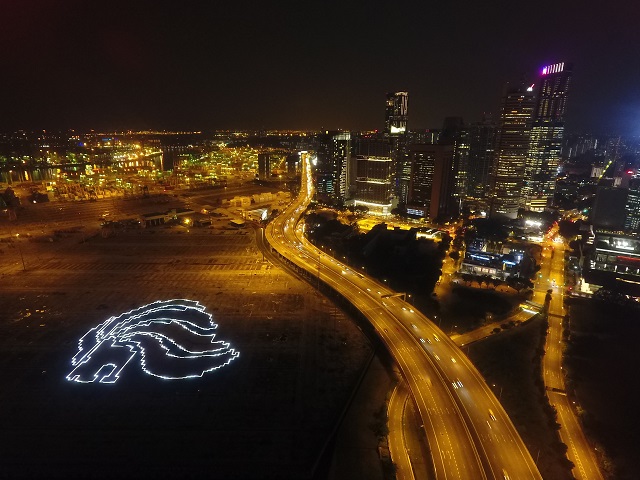Lion Head Container Image Sets Record
As part of a commemoration event celebrating the contributions of Tanjong Pagar Terminal to Singapore’s economy, PSA has achieved a first-ever Guinness World Records title for the largest shipping container image.
Located in the heart of Tanjong Pagar Terminal, the feat involved 359 shipping containers taking the shape of the Lion Head symbol of Singapore. The Lion Head symbolizes courage, strength and excellence and took 15 hours to complete.
 The event marks the shift of Tanjong Pagar Terminal's core port operations to the Pasir Panjang Terminal. Tanjang Pagar Terminal will now be used to handle ancillary services such as car transshipment.
The event marks the shift of Tanjong Pagar Terminal's core port operations to the Pasir Panjang Terminal. Tanjang Pagar Terminal will now be used to handle ancillary services such as car transshipment.
Officially opened in 1972, Tanjong Pagar Terminal was the first container terminal in Southeast Asia to receive a container vessel, the MV Nihon. Since then, and with the advent of larger container ships requiring deeper berths, PSA has begun the process of moving from this pioneering facility as well as its other city terminals, Keppel and Brani, to newer facilities at Pasir Panjang, where operations will continue for at least another 20 years. These developments are part of PSA’s long-term plans to eventually consolidate container port activities at Tuas.
Today, PSA Singapore handles over 30 million TEUs a year and is the world’s largest container transshipment hub.
 Singapore's Transport Minister Khaw Boon Wan, said: “It is an end of an era.
Singapore's Transport Minister Khaw Boon Wan, said: “It is an end of an era.
“Mr Lee Kuan Yew had once said that “Singapore's raison d'etre was its port”, meaning that Singapore's very reason for being is its port. Indeed, Singapore has been an entrepot since the time of Stamford Raffles. Back then, the port of Singapore was synonymous with Boat Quay. It was a place where coolies manually loaded and unloaded heavy sacks of rice, coffee, spices and bales of rubber from the bumboats along the Singapore River.
“After independence in 1965, one of the major decisions our founding leaders had to make was whether to build a container port. At that time, Japan was the only other Asian country with a container terminal. Containerization was still a new tentative idea. In 1966, Mr Lee and his Cabinet took a bold decision to build a container port. Six years later, in 1972, Singapore's first container terminal was commissioned, right here at Tanjong Pagar,” he said.
“As Singapore's economy thrived, we expanded our port in tandem, from Tanjong Pagar first to Keppel and then also to Brani. Last year, we handled 31 (30.9) million TEUs - compared to a mere 25,000 TEUs in 1972. We were able to do so because we never stopped looking ahead, planning in advance, and investing in our port. Even as we moved into Pasir Panjang Phases 3 and 4 recently, we have already started the reclamation works and the planning for Tuas Port.
“Why do we do that? It is because the port is an important point of entry into Singapore. Through the port, we bring in the things we need conveniently and at low cost. The port is also an important connection to the world. Because we are the world's biggest transshipment hub, our port has superior connectivity to other ports, and many shipping lines make frequent stops at Singapore. That means businesses in Singapore can get their goods into and out of Singapore quickly and at competitive cost.”
The port and the maritime sectors play a significant role in Singapore's economy, contributing seven percent of the nation's GDP and employing more than 170,000 people.
